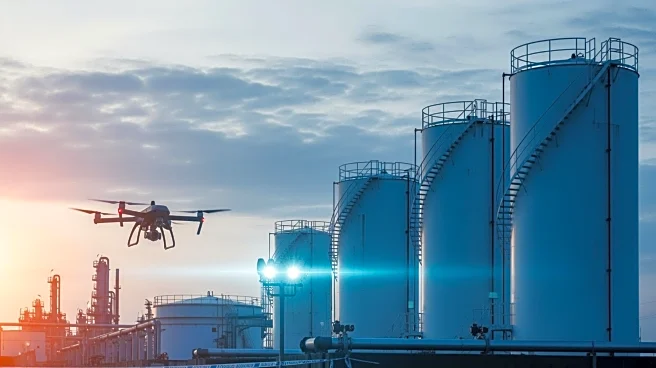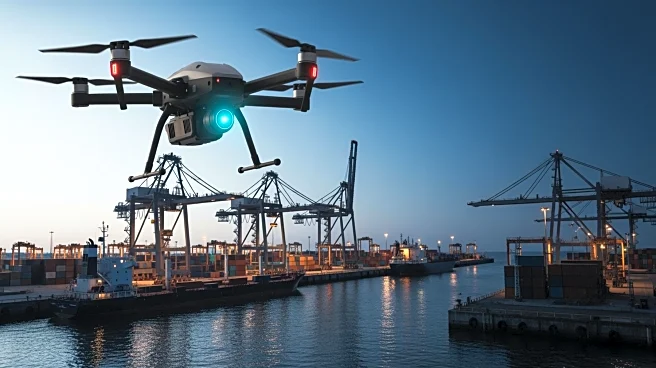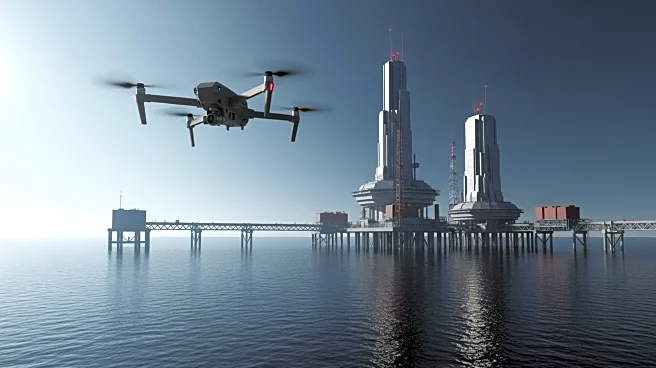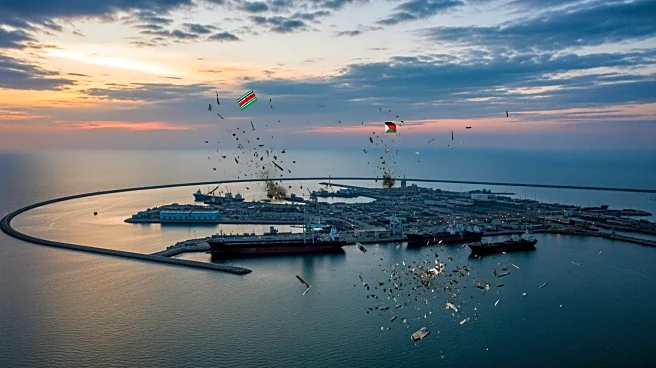What's Happening?
Ukrainian forces have conducted a significant strike on the Russian port of Novorossiysk, damaging vital oil loading terminals. The Sheskharis terminal, a key point for Transneft's pipelines, was hit hard,
with videos showing it engulfed in flames. The attack follows recent strikes on other Russian oil infrastructure, including the port of Tuapse and the Saratov refinery. These coordinated efforts appear to be aimed at disrupting Russia's oil exports and revenue streams.
Why It's Important?
The strike on Novorossiysk underscores Ukraine's strategic use of drones to target Russian economic assets, potentially impacting Russia's ability to fund its military operations. By disrupting oil exports, Ukraine aims to weaken Russia's financial stability and reduce its capacity to sustain the conflict. This approach could lead to increased economic pressure on Russia and influence its military strategies.
What's Next?
Continued attacks on Russian oil infrastructure may lead to heightened tensions and potential retaliatory measures by Russia. The conflict could see an escalation in drone warfare, with both sides seeking to gain an advantage through technological advancements and strategic targeting.
Beyond the Headlines
The use of drones to target economic infrastructure raises ethical and legal questions, particularly regarding the impact on civilian populations and the environment. As drone technology evolves, it may lead to changes in international law and military strategies, influencing future conflicts.












